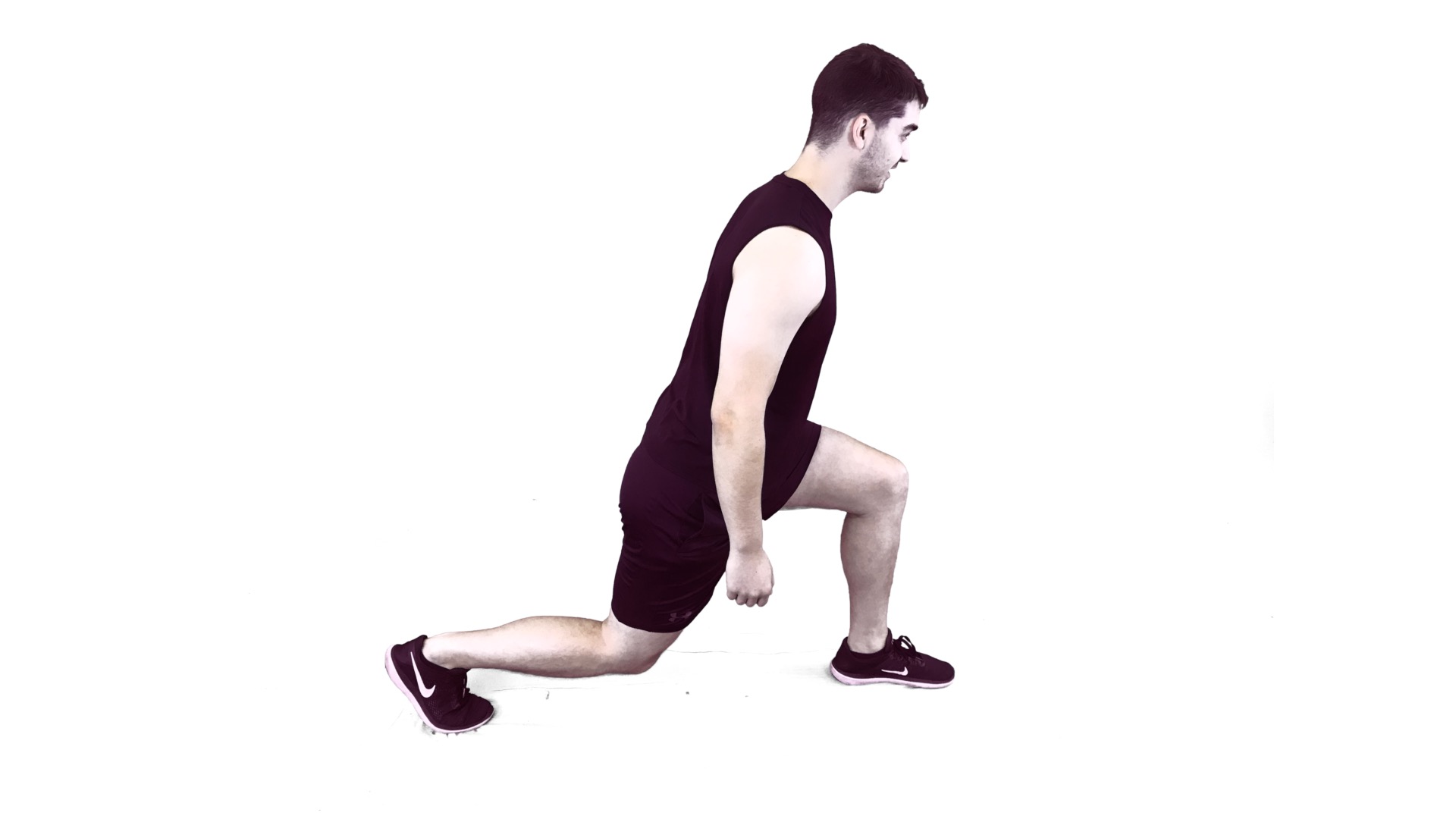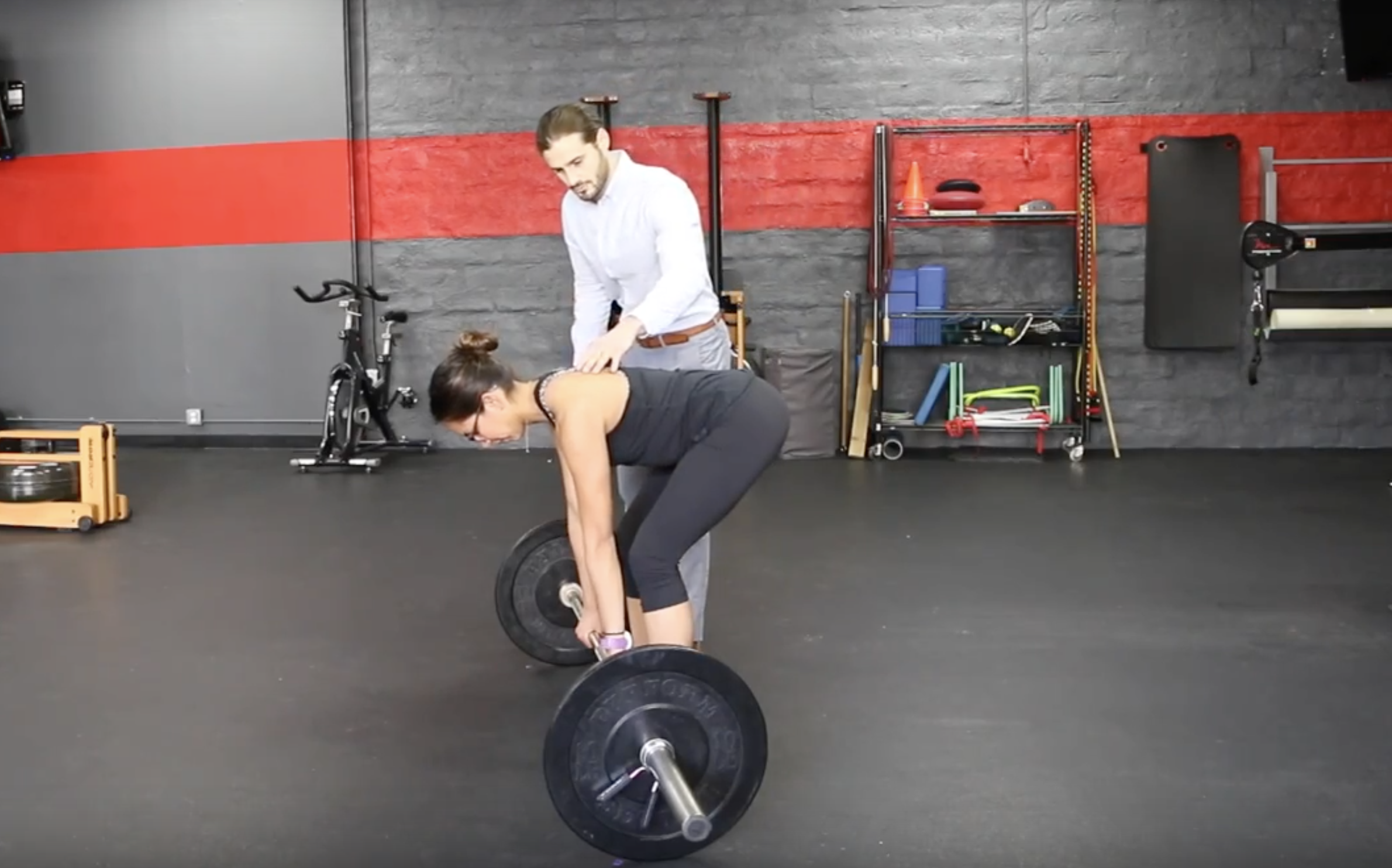Here’s our latest in the Sports Health section from Dr. Jonathan Hartman and Dr. Marshall LeMoine. This topic has been broken out into 3 parts due to its’ length so keep an eye out every Wednesday of this month to stay on top of this great article.
We hope you’ve enjoyed this article thus far! To recap here are the links in case you missed them and need a refresher
Lunging Into Stride Length Part I: Introducing the Benefits of a Functional Lunge
Lunging Into Stride Length Part II: Research Based Evidence of Benefits of the Lunge for Strength and Sport Adaptations
Lunging Into Stride Length Part III: Lift Progressions of the Lunge to Optimize Performance
For your reference during the movement assessment, here’s the Step Back Barbell Lunge Movement Fault Guide and quick reference cheat sheet. If you’d like to read on further, the research and citations are listed below!
Here’s the Step Back Lunge demonstrated by Dr Hartman himself. (In case you missed this in our first post.)
Step Back Barbell Lunge Movement Fault Guide:
Lateral View:
Chin neck angle constant 60-90 (Cue: Hold a tennis ball under chin- DNF, Stick on back/ head, allow gaze to follow body)
External auditory meatus over shoulder
Thumbs always over the bar (To avoid wrist extension and wrist injury, also allows for elbows up for latissimus engagement)
Any bar lunge, the bar will ALWAYS be just below C7 spinous process
Elbows back and slightly up (should only see one elbow from the side if they are in line)
Abdominal Brace (Breath in and out at the top of lunge, never bottom position, no trunk rotation or lateral flexion)
Lumbar spine neutral to start
Start the lunge with a hip hinge first then allow a knee break and continue with 1:1 knee and hip flexion rate
Front knee pulled out over toes 1-3 (throughout closed chain knee flexion of the front leg)
No femoral adduction/IR on either leg when in closed chain (on descend or ascend)
Front foot does not have excessive pronation
Both feet start hip distance apart or slightly narrower, foot that steps back tracks in a straight line and lands on the ground in the same plane as starting foot position
Step back and lower (do not touch knee to ground)
Re-rack weight by returning to starting position, Look to see that the bar is at the same height on both sides, Lock bar in, then finally Look to check that it is fully locked in, then step out (Always re-rack weight with 3 “L” Check Procedure Look/Lock/Look then step out)
Posterior View:
Cervical neutral without lateral flexion
Thumbs always over the bar (To avoid wrist extension and wrist injury, also allows for elbows up for lats engagement)
Any bar back lunge, the bar will ALWAYS be below C7 spinous process
Elbows back, slightly up, same height (Bar parallel to ground)
Abdominal Brace (Breath in and out at the top of lunge, never bottom position, no trunk rotation or lateral flexion)
Lumbar spine neutral to start
Start the lunge with a hip hinge first then allow a knee break and continue with 1:1 knee and hip flexion rate
Front foot neutral eversion / inversion (Toe sign)
Front knee pulled out over toes 1-3 (throughout closed chain knee flexion of the front leg)
No femoral adduction/IR on either leg when in closed chain (on descend or ascend)
Front foot does not have excessive pronation
Both feet start hip distance apart or slightly narrower, foot that steps back tracks in a straight line and lands on the ground in the same plane as starting foot position
Equal leg window always seen from posterior view throughout motion
Step back and lower (do not touch knee to ground)
Re-rack weight by returning to starting position, Look to see that the bar is at the same height on both sides, Lock bar in, then finally Look to check that it is fully locked in, then step out (Always re-rack weight with 3 “L” Check Procedure Look/Lock/Look then step out)
Quick Look Movement:
Bar starts on the rack level of inferior scapular angle
Patient steps under and positions bar, patient feels comfortable with bar weight and is ready
Set up Trunk to Floor positioning
Chin neck angle 60-90 entire time without lateral flexion
Turn on Brace (Tactile cue/one long controlled pursed lip exhale breath or breath held for entire motion is OK)
One leg steps back and hip hinge initiation with trunk anterior lean to start movement followed by knee flexion
After hip hinge initiation, hip and knee flexion at same rate on front leg
Step back and lower (do not touch knee to ground)
Step back with foot landing in line with starting position
Avoid Femoral adduction/ IR
Breath at top and reposition as needed
Re-rack weight with 3 “L” Check Procedure Look/Lock/Look then step out
Research Quick Reference:
Gluteus maximus and medius are better activated with exercises that have a single stance leg component (1)
To Increase the hip extensor impulse and hip extensor EMG of the (G-max and BF) use a forwards trunk lean (Average of 107.9° hip flexion) (7)
In order to enhance activation of the superficial core musculature unilateral UE weights should be used over bilateral UE weights (14)
Joint loading progression for the hip can begin with Single-leg squat → Reverse lunge → Forward lunge (3)
Joint loading progression for the knee and ankle can begin with Reverse lunge → Forward lunge → Single-leg squat (3)
Walking lunge + weight held in the contralateral arm to the anterior/ moving leg leads to an increase the gluteus medius and vastus lateralis activation. (16)
CITATIONS
Boren K, Conrey C, Le Coguic J, Paprocki L, Voight M, Robinson TK. Electromyographic analysis of gluteus medius and gluteus maximus during rehabilitation exercise. International Journal of Sports Physical Therapy. 2011;6(3):206-223.
Chowdhury, S., & Kumar, N. (2013). Estimation of forces and moments of lower limb joints from kinematics data and inertial properties of the body by using inverse dynamics technique. Journal of Rehabilitation Robotics, 1(2), 93-98
Comfort P, Jones PA, Smith LC, Herrington L. Joint Kinetics and Kinematics During Common Lower Limb Rehabilitation Exercises. Journal of Athletic Training. 2015;50(10):1011-1018. doi:10.4085/1062-6050-50.9.05.
Contreras, Bret. Force Vector Training (FVT). The Glute Guy, 1 July 2010, Bretcontreras.com/load-vector-training-lvt/.
Dwyer MK, Boudreau SN, Mattacola CG, Uhl TL, Latterman C. Comparision of lower extremity kinematics and hip muscle activation during rehabilitation tasks between sexes. J Athl Train. 2010;45(2):181–190
Ekstrom RA, Donatelli RA, Carp KC. Electromyographic analysis of core trunk, hip, and thigh muscles during 9 rehabilitation exercises. J Orthop Sports Phys Ther. 2007;37(12):754–762.
Farrokhi S, Pollard CD, Souza RB, Chen YJ, Reischl S, Powers CM. Trunk position influences the kinematics, kinetics, and muscle activity of the lead lower extremity during the forward lunge exercise. J Orthop Sports Phys Ther. 2008 Jul;38(7):403-9. doi: 10.2519/jospt.2008.2634. Epub 2008 Apr 15.
Flanagan et al (2003). Lower extremity biomechanics during forward and lateral stepping activities in older adults. Clinical Biomechanics, 18(3), 2 14-22. Roger W. Earle (2005). Essential of personal training. National Strength and Conditioning Association.
Hefzy MS, al Khazim M, Harrison L. Co-activation of the hamstrings and quadriceps during the lunge exercise. Biomed Sci Instrum. 1997;33:360–365.
Khaiyat OA, Norris J. Electromyographic activity of selected trunk, core, and thigh muscles in commonly used exercises for ACL rehabilitation. Journal of Physical Therapy Science. 2018;30(4):642-648. doi:10.1589/jpts.30.642.
N Boudreau, Samantha & Dwyer, Maureen & Mattacola, Carl & Lattermann, Christian & Uhl, Tim & Medina McKeon, Jennifer. (2009). Hip-Muscle Activation During the Lunge, Single-Leg Squat, and Step-Up-and-Over Exercises. Journal of sport rehabilitation. 18. 91-103. 10.1123/jsr.18.1.91.
Riemann BL, Lapinski S, Smith L, Davies G. Biomechanical Analysis of the Anterior Lunge During 4 External-Load Conditions. Journal of Athletic Training. 2012;47(4):372-378.
Riemann, Bryan & Congleton, A & Ward, R & Davies, George. (2013). Biomechanical comparison of forward and lateral lunges at varying step lengths. The Journal of sports medicine and physical fitness. 53. 130-8.
Saeterbakken AH, Fimland MS, Navarsete J, Kroken T, van den Tillaar R (2015) Muscle Activity, and the Association between Core Strength, Core Endurance and Core Stability. J Nov Physiother Phys Rehabil 2(2): 028-034. DOI: 10.17352/2455-5487.000022
Saeterbakken, Atle & Fimland, Marius. (2011). Muscle activity of the core during bilateral, unilateral, seated and standing resistance exercise. European journal of applied physiology. 112. 1671-8. 10.1007/s00421-011-2141-7.
Stastny et al (2015). Does the dumbbell-carrying position change the muscle activity in split squats and walking lunges? Journal of Strength and Conditioning Research, 29(11), 3177-3187. Thomas R. Baechle et al (2013) Essentials of strength training and conditioning. National Strength and Conditioning Association.
Stuart MJ, Meglan DA, Lutz GE, Growney ES, An KN. Comparison of intersegmental tibiofemoral joint forces and muscle activity during various closed kinetic chain exercises. Am J Sports Med. 1996; 24(6):792–799.










